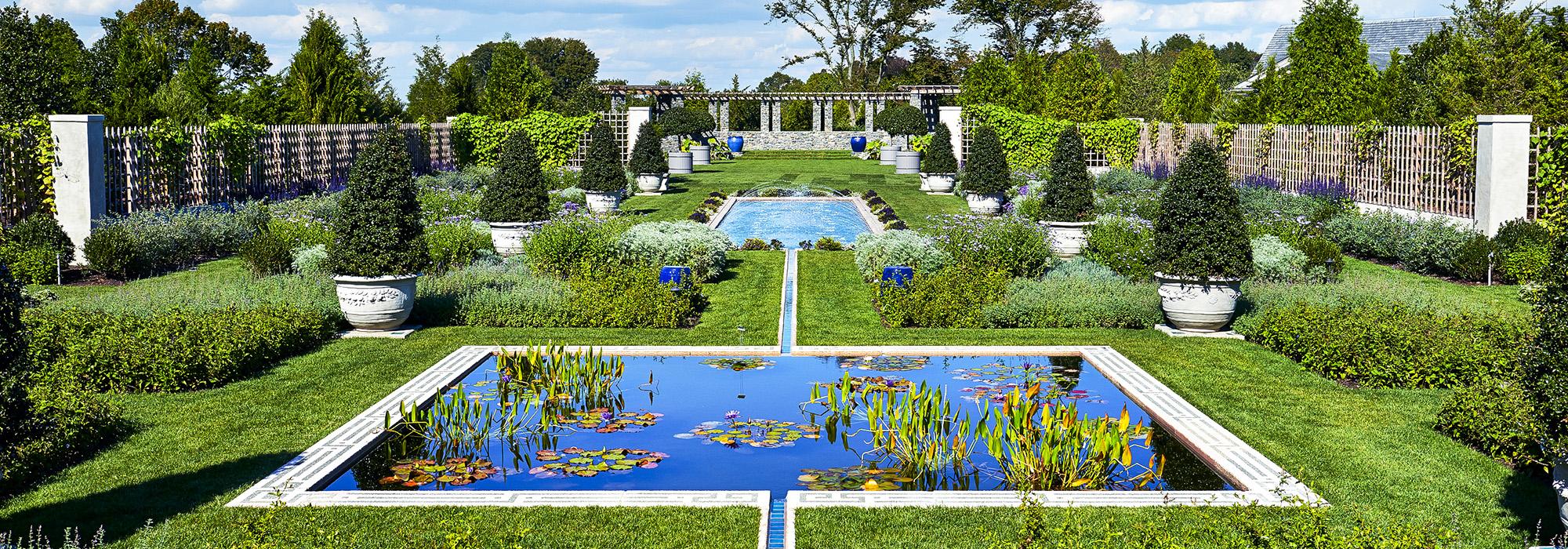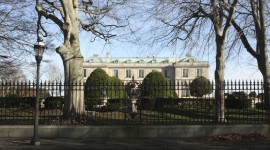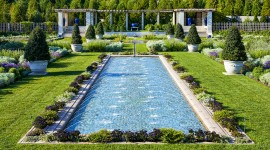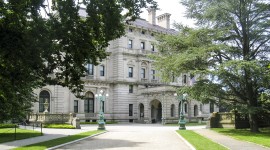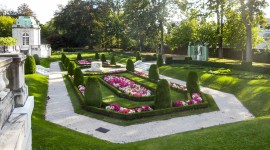Eden of America: The Landscape Heritage of Newport, Rhode Island
“[T]he island is exceedingly pleasant and healthful, and the women beautiful…Travelers, with propriety, call it the Eden of America.”
-Jedidiah Morse, American Geography; or A View of the Present Situation of the United States of America, 1789.
The landscape of Newport is dramatic and seductive. Rugged cliffs and windswept meadows mingle with French parterres, Italian fountains, and parks punctuated by rare trees. The combination of these disparate elements of untamed nature and highly cultivated gardens gives the city its unique and distinctive character. Perched at the picturesque tip of Aquidneck Island, scenery and social life have shaped the cultural landscape of Newport for the past three centuries. The colonial quarter hugs the west facing harbor, while the summer colony of the nineteenth and twentieth centuries sought out ocean views from the fields, cliffs, and rocky coastline to the east and south. As the acknowledged “Queen of Resorts,” nineteenth century Newport attracted the nation’s leading architects, landscape architects, and decorators, who made the town a veritable laboratory of design. Bellevue Avenue, established in the early 1850s, became the site of a construction boom of Gothic and Italianate villas, which were featured in Newport and Its Cottages (1875), the first of many publications promoting the city as a place for architectural and horticultural fashion. In the 1860s, Ocean Drive opened the rocky coves and rolling hills of the southern part of Newport to development, providing a popular scenic destination.
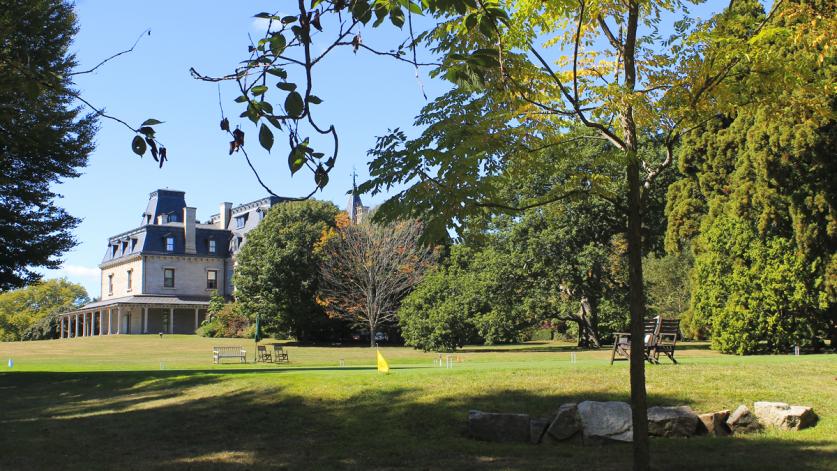
During the 1880s, specimen trees, especially beech, arrived in Newport in full force. European, Copper, and Fernleaf beeches flourished in the coastal climate, dominating the Picturesque schemes of prominent designers such as Ernest Bowditch and Olmsted Brothers, who worked on over 30 Newport commissions. Among the notable landscapes are Chateau-sur-Mer, with its superb collection of trees (1852), the model estate and chicken farm at Vinland (1883), and Frederick Law Olmsted’s Morton Park (1893). A new spirit in landscape design arrived in the mid-1890s, when Beaux-Arts classicism ushered in axial formality and spatial structure, found in Italian Renaissance-inspired palaces and French châteaux rising along the cliffs. Terraced parterres appeared at The Breakers (1895) while The Elms (1901) displayed Italian Baroque style fountains and French Neo-classical garden pavilions.
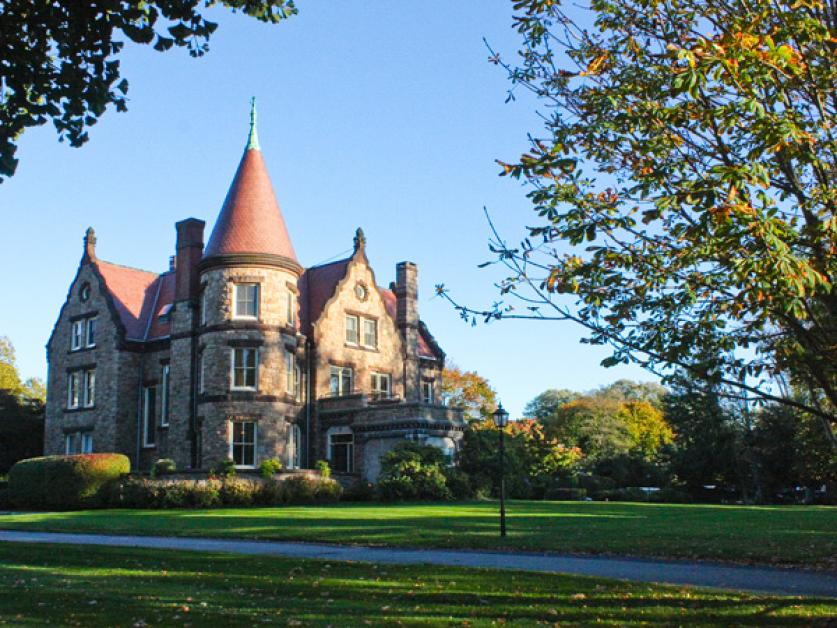
Since Newport was a place to both see and be seen, champions and critics offered both praise and blame. In The American Scene (1907), Henry James expressed his deep disappointment that the gentle island of his youth had become a “breeding ground for white elephants.” Munsey’s Magazine (1900) stated, “…everything is measured in the scale of millions. Even the flowers preach the gospel of wealth. Nature made it the most beautiful summer resort in the world; man has made it a monument to his colossal vanity. But it has the merit of being a beautiful and magnificent monument.” The high noon of the Gilded Age, its gardens and social theater was the dedication of the Blue Garden at the Arthur Curtiss and Harriet James estate in August of 1913. Illuminated by electric light, the garden was a stage for a troupe of actors dressed as ancient nymphs who cavorted about the flowers and pools until trumpeters in Renaissance costume interrupted the festivities to announce dinner.
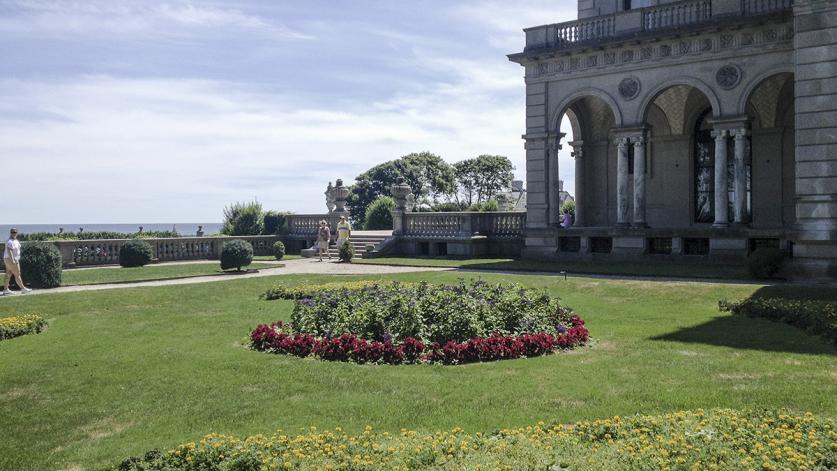
World Wars and economic depression brought decline to Gilded Age Newport and its landscapes. New ideas in garden planning found no home in the fading resort, with one notable exception. In 1949, Mrs. George Henry Warren commissioned Christopher Tunnard to design a Modernist garden with boxwood clipped in the form of question marks and semi-colons. The drama of Newport’s physical setting and architectural heritage allowed for a remarkable juxtaposition of old and new in the 1974 MONUMENTA outdoor sculpture exhibition set among the city’s historic buildings, gardens, and coastline. For the exhibit, Richard Fleischner produced Sod Maze at Chateau-sur-Mer while Christo and Jean-Claude wrapped Price’s Neck on Ocean Drive.
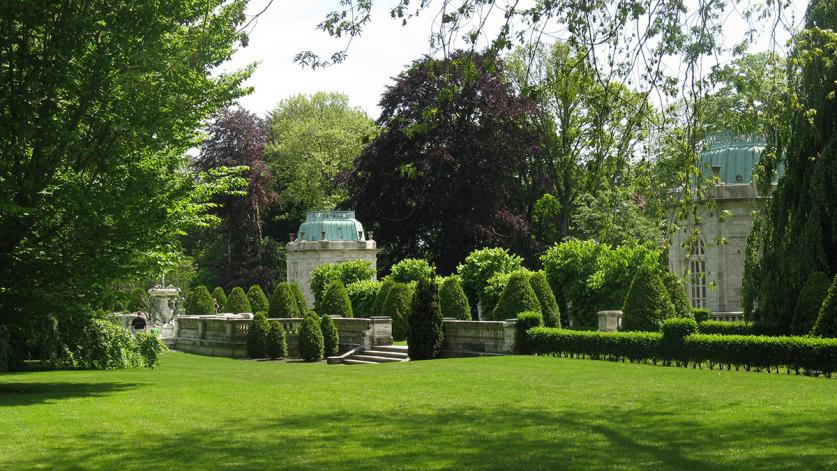
Today, Newport is comprised of National Historic Landmark districts and is designated a Tree City USA with many organizations tending to the care of the city’s public parks and open spaces, tree canopy, and historic sites. It is a richly layered cultural landscape offering scholars and casual visitors alike living examples of the artistic, horticultural, and social forces that shaped this unique American landscape in the nineteenth and early twentieth centuries. The natural and the manufactured coexist in Newport, sometimes comfortably, sometimes not. This dichotomy has always inspired creativity and compromise, often resulting in a lively dialogue among both critics and champions of this so-called “Eden.”



